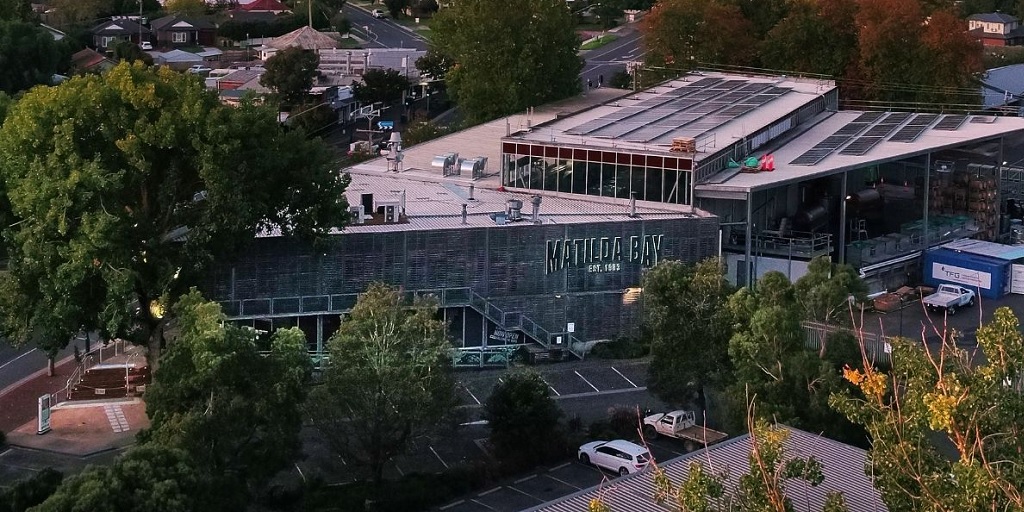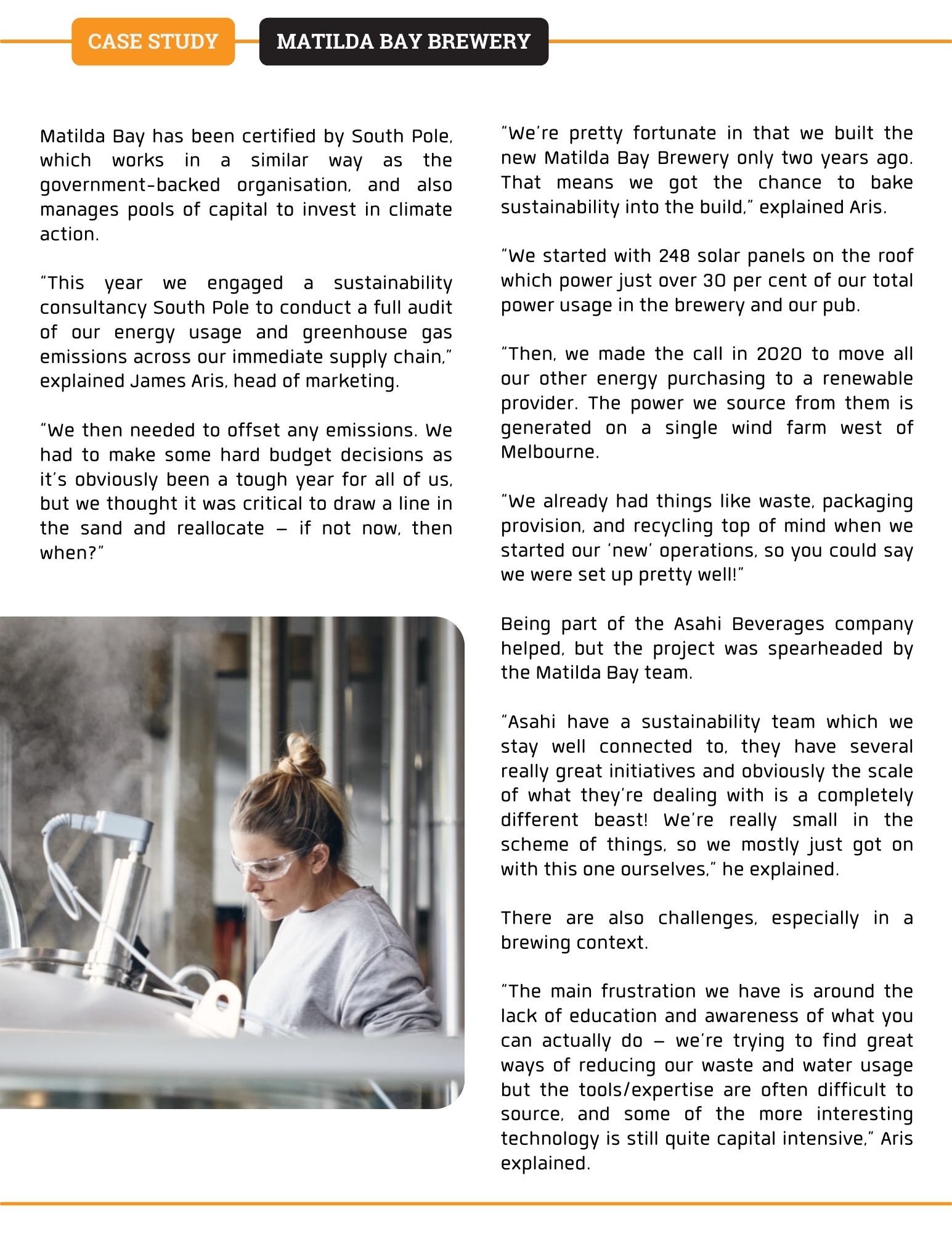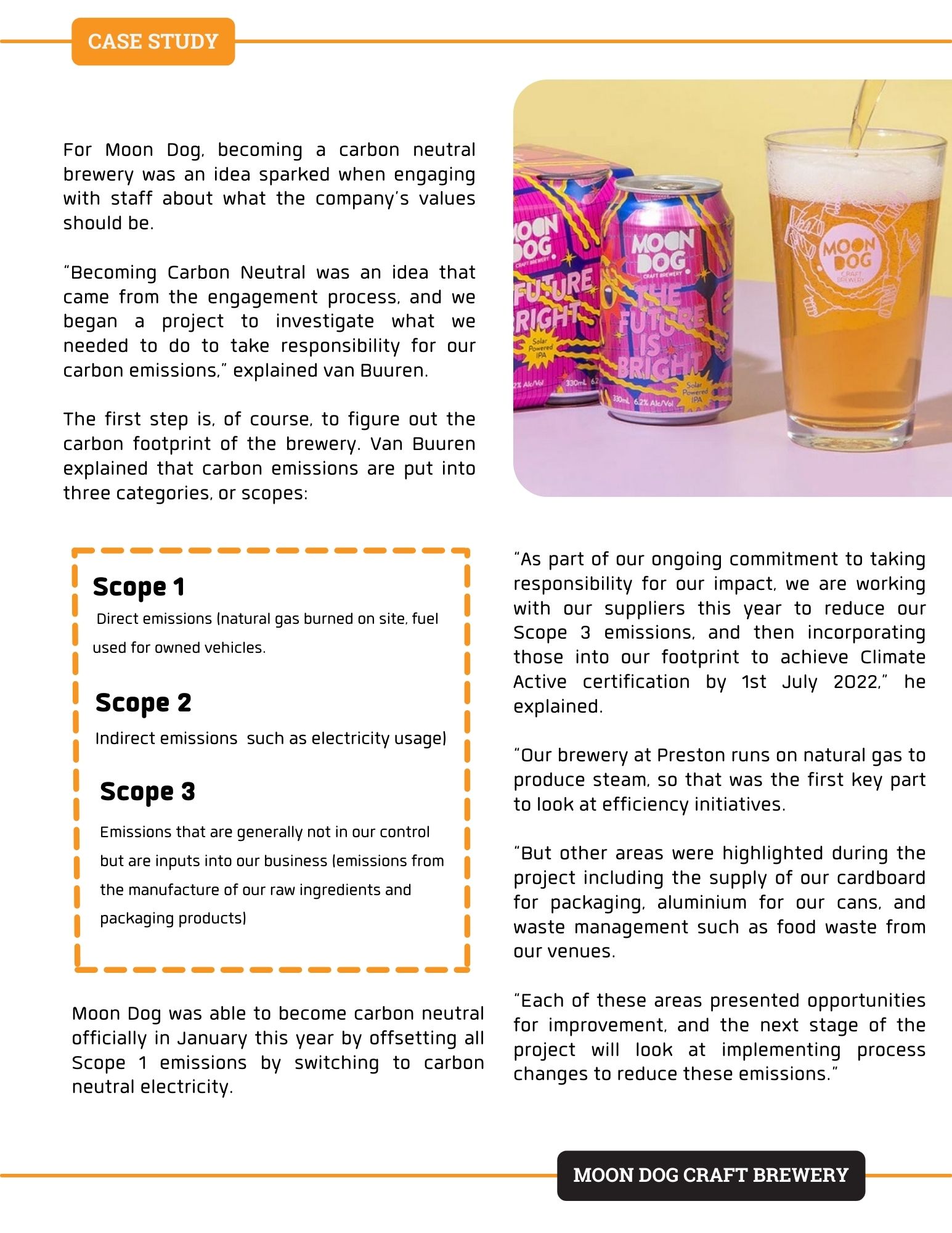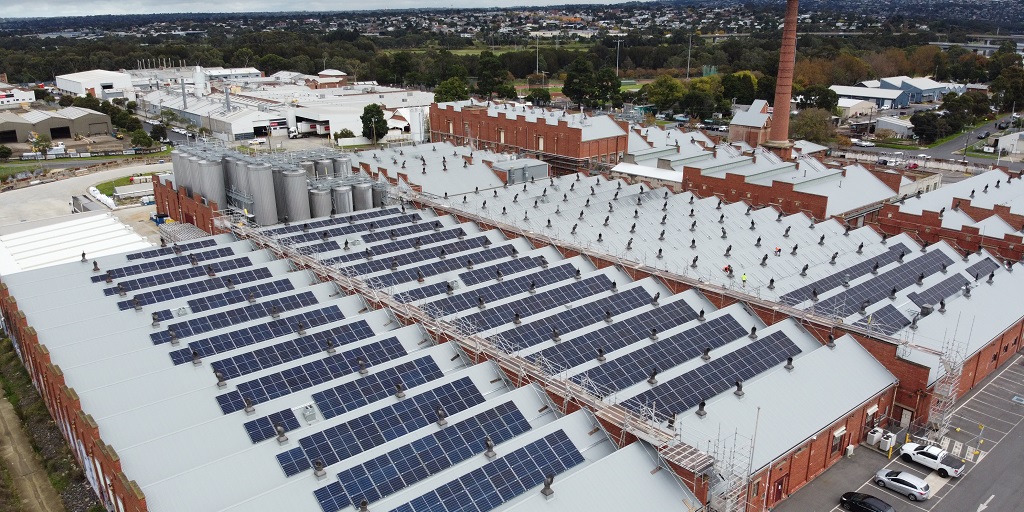How to become a carbon neutral brewery March 2022

In the face of climate change and consumer expectation, breweries are focusing on how they can be more sustainable, in every sense of the word.
From Terella Brewing Co.’s waste-CO2-powered vertical farms, to Young Henry’s algae project and Helios’ focus on solar energy, Australia’s brewing industry is looking at ways to minimise its impact on the environment.
One aspect brewers have focused on is carbon emissions, with a move to making operations carbon neutral – meaning that CO2 emissions are made net zero through the elimination of emissions and offsetting.
Matilda Bay Brewery became carbon neutral-certified last year, and Moon Dog Craft Brewing announced its certification earlier this month. Capital Brewing has been working for the past year towards its carbon neutral certifications and Lion also declared itself as Australia’s first carbon neutral brewery in 2020 – there is a growing interest amongst breweries in this space.
But even identifying carbon creating sources in brewery can be challenging, let alone undertaking a cost-benefit analysis, figuring out which processes to change and how much you will have to offset for already time and resource-poor breweries.
What does it mean to be carbon neutral certified?
The aim of the process is to become net zero for carbon emissions for as much of the business as can be directly overseen – but of course this becomes more and more difficult as supply chains and other elements of the business become more complex and are included in a company’s calculations.
Sustainability has been on the agenda at all levels of government, and this has led to Climate Active, a partnership between Australian Government and businesses, aimed at measuring, reducing and offsetting carbon emissions to lessen the negative impact of business activities on the environment. The organisation also oversees the Climate Active Carbon Neutral certification.
“For organisation certification, organisations calculate the greenhouse gas emissions generated by their business activity, such as fuel or electricity use and travel,” explained a Climate Action spokesperson.
“They reduce these emissions as much as possible by investing in new technology or changing the way they operate. Any emissions that still remain can be ‘cancelled out’ by purchasing carbon offsets.
“Carbon offset projects prevent greenhouse gas emissions from being released into the atmosphere, or draw emissions out of the atmosphere, for example by planting trees. When the offsets purchased by an organisation equals the emissions produced they are carbon neutral.”
A business will register and sign a licence agreement with Climate Active, before measuring their carbon footprint, identifying their emissions boundary and preparing a carbon inventory.
Third party independent validation is required for all carbon neutral claims, and carbon offsets are purchased for any remaining emissions that cannot be eliminated, and there is a technical guidance manual for detailed information on the certification process.
All or part of a business can be certified as part of Climate Active’s certification process, including individual products or even an event.
“With a service or product, a Climate Active certification is defined by the functional unit. For products, the functional unit may describe the finished product at point of sale,” a spokesperson explained.
“Businesses must conduct a life cycle assessment. A cradle-to-grave life cycle assessment considers the entire life cycle of a product or service, from raw material extraction and acquisition, through to energy and material production and manufacturing, use and end of life treatment and disposal.
“Organisations must first draft their emission boundary and get a rough estimation of the carbon footprint. All organisations are different.
“There is no one way to set an emissions boundary [and] emissions boundaries must include all relevant emissions sources. This includes all emissions under the direct control or ownership of an organisation, such as stationary energy, fuels and electricity,” they explained.
Climate Active isn’t the only certification body, with others like South Pole and The Carbon Trust offering similar certifications.


Challenges of becoming carbon neutral
Of course, becoming carbon neutral is no magic bullet, and there are issues and challenges particularly as a brewery gets bigger.
This is particularly the case when there is an element of self-reporting in the certification, which means that the company can identify the areas which it can consider in its calculations of carbon emissions.
Moon Dog’s founder Karl van Buuren explained that Climate Action sets the framework to allow businesses to determine, verify and disclose their emissions boundary on a case-by-case basis.
“It is not the role of Climate Active to determine which emission sources are included in a business’s carbon neutral claim, aside from emissions deemed relevant,” he explained.
“This approach allows the business to make the assessment of included emissions itself, since they know their business and stakeholders best. The approach also relies on transparency to enable public scrutiny of a business’s carbon neutral claim.”
This element of self-management is a big resource-drain on any company, and it also means that companies need to be transparent about how they are assessing their own emissions.
Climate Active said that “transparency of information is important for maintaining consumer confidence in Climate Active claims” and as a result, a key element of the Climate Active certification is the publication of the organisation’s Public Disclosure Statement.
Lion, for instance, published its first public disclosure report recently, and the brewer highlights the locations included in its emissions boundaries, as well as what those boundaries are.
Lion includes everything from electricity, gas and refrigerants to emissions from its employee’s travel and recycling and waste to landfill in its emissions boundary, but does not include downstream emissions, raw materials, packaging, product distribution and a number of other categories.
This element of self analysis and self-regulation can be a tricky aspect of any carbon neutral certification, and determining where to draw that line is a key element of the carbon neutral process.
There are also some major barriers in understanding what being climate or carbon neutral means.
“The major barriers for companies are awareness and education around the certifications and the process – I know we had a lot of learning to do,” Matilda Bay’s James Aris said.
“You layer on top of that a really terrible 18 months commercially with lots of adjustment and pivoting, and it’s easy to see how something like this can slip down the list.”

Becoming carbon neutral: The process
Breweries might be interested in becoming carbon neutral, but struggle with the minutiae of the project, especially in smaller breweries.
Some changes to become carbon neutral can be major, such as implementing or purchasing electricity from renewable sources, but even things like reducing travel, or using carbon neutral products and services can help.
“You can get lost in audits and researching offset programs and the pros and cons of everything,” explained James Aris.
“[But] the next thing is work out how you make it yours.
“Engage your local council and do a tree planting day with your team. Step up your recycling game or get an electrician to come in and optimise all your lighting. Have a look at your supply chain and make choiceful decisions based on road miles.
“The next thing is get connected to local groups – your council and renewable energy groups. It could open you up to a great network of people who can help you obtain grants for solar installations and energy audits.
“Oftentimes breweries are a key community pillar and meeting point – so your advocacy and leadership in this area will set a great example for other businesses and locals.”
Understanding why the business is undertaking a carbon neutral project and how it could benefit the business, as well as employees and the local community, is key.
“The days of purpose or profit are over I think – doing good really is good business!
“Not only are you setting yourself up to be on the front foot if any legislation comes in, but stockists and consumers are looking on this positively – particularly if your/their demographic skews younger.
“With the level of competition in the beer world at the moment it’s definitely another tick that differentiates you,” said Aris.
“Another massive benefit is attracting and retaining great talent – everyone knows how important this is and we’re seeing more and more ask us the hard questions about sustainability through the hiring process.
“People love turning up to work knowing the company they are helping to build is having a positive impact (or at least a neutral impact!).”

Lion became carbon neutral in 2020
Moon Dog’s Karl van Buuren said that a cost-benefit analysis will consist of a lot of less tangible components.
“There is a global shift towards carbon emissions reduction, and we wanted to ensure that we’re ahead of any regulatory changes that may occur in the future.”
Process improvements as part of the certification journey can make some energy saving and other benefits from the get-go.
“The immediate key benefits we had were around process improvements mainly. Reducing our carbon impact works hand in hand with increasing our energy efficiency, and hence our overall brewery and venue efficiency,” he said.
“A lot of the carbon reduction initiatives have co-benefits in other areas within the business. In the end, we knew there would be costs associated with capital works and offset investments, but taking responsibility for our impact on the environment was a commitment we made, so we are seeing it through.
“The benefits you get by looking over every part of your business, and engaging your team for such a great cause, cannot be understated. You will find “low hanging fruit” improvements straight away, and any progress towards reducing your environmental impact is always going to be positive.
“The key thing is really just to get started. Don’t be put off by the thought of sinking lots of money into carbon offsets. That really is only a small part of the journey.”

